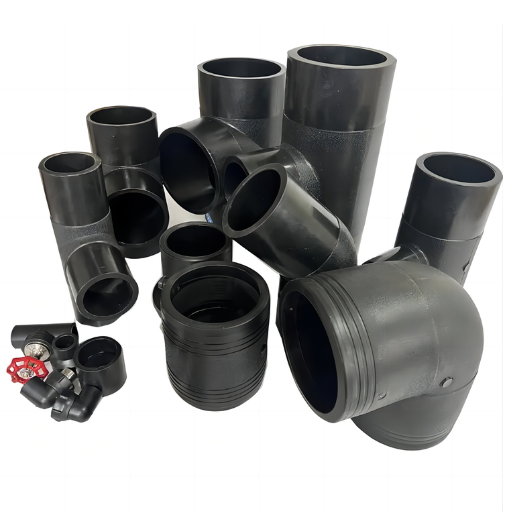High strength, hardness, and corrosion resistance are why industrial pipe systems have adopted high-density polyethylene (HDPE) as the top material. This manual is about HDPE butt fusion fittings which are essential in any seamless network of pipes connections establishment. There will be a discussion on different kinds of these fittings, the process of fusing them, applications across various industries, tips for installation, and maintenance practices. Whether you have been doing this job for years or it’s just your first day at work, after reading through this guidebook comprehensively, you will be knowledgeable enough to use HDPE fittings optimally, besides understanding their preference in most contemporary piping solutions.
What are HDPE Butt Fusion Fittings?
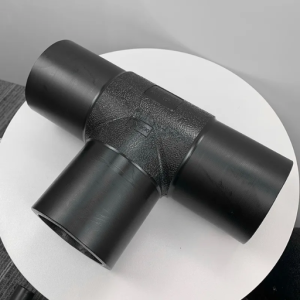
Image source: https://www.hailigd.com/
Butt welding fittings used with plastic pipes comprise a special kind of component designed to connect two parts made from high-density polyethylene (HDPE). They are made by heating both ends of the pipe plus fitting until they melt, then pressing them together to form one piece permanently. This technique yields joints that can withstand the same pressure levels as those supported by pipes but have no leak-age tendency when subjected to environmental changes. Various shapes and sizes are available, including couplings, bends tees, and end caps, among others, thereby making these items indispensable components for constructing efficient, durable plumbing systems suitable for all types of applications.
Understanding HDPE
High-density polyethylene (HDPE) is a petroleum-derived thermoplastic polymer known for its strength-to-density ratio. This feature makes it an excellent choice in many applications, especially pipe production. Chemical resistance, UV protection, and ability to operate in extreme temperatures are among the main attributes of HDPE pipes that make them last long and be applicable anywhere. It also has low weight, which eases transportation and installation processes while remaining flexible enough not only to bear higher pressures but also allow for installations under challenging terrains — such benefits increase the functionality of piping systems as well as save on costs incurred during maintenance, thus making it suitable for use across industries involved with water supply systems; sewage treatment plants; industrial fluid handling services etcetera.
The Process of Butt Fusion Welding
Butt fusion welding is an effective technique employed when joining two pieces of these types of tubes together becomes necessary; here are some steps involved: Firstly, I position the pipe ends that ought to be connected so they face each other directly hence creating alignment between them before checking if there are any dirt or foreign materials present at this area since all surfaces need to remain clean throughout this process. Secondly, I use a particular heating device to heat both sides simultaneously until they reach certain temperatures required for fusion between fittings at about 450°F (232°C), the typical range used with HDPE pipes. The moment they get hot enough, I withdraw the heating part rapidly and then bring molten portions into contact firmly under specific pressure levels where they stay joined by cooling down alongside each other, thereby forming a solid joint; such connection becomes part of the overall strength integrity within the pipeline network itself. Last but not least always remember particular rules as well as methods that should be followed during my work so that I can achieve good results on welds’ quality plus their dependability too because whenever butt fusions are correctly executed, much more leaks will occur, thus enhancing life expectancy after the installation has been completed.
Types of HDPE Butt Fusion Fittings
There are different kinds of HDPE butt fusion fittings for various piping requirements. Typically, the most popular types include:
- Elbows: Elbows change the direction of the piping system. They come in various angles, such as 90 and 45 degrees.
- Tees: These are used when branch lines need to be connected to the main pipeline. They create a T-shaped joint, which is essential for distributing flow.
- Reducers: Reducers connect pipes of different diameters and help maintain pressure and flow rates within the system.
- Couplings: Couplings act as straight fittings that join two pipe sections with similar diameter sizes, facilitating the pipeline’s extension.
- Cap Fittings: Cap fittings are used for sealing off ends of pipes; they terminate lines and ensure system integrity is maintained.
Every fitting type is crucial for enabling smooth flow while upholding the structural soundness of HDPE piping systems. To realize success, one should have a proper grasp and selection skills for these fittings during installations.
How to Select the Right HDPE Butt Fusion Fittings?
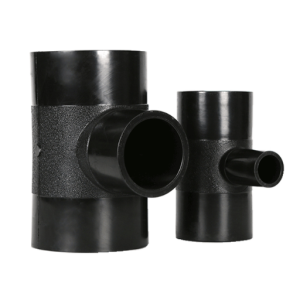
The ideal HDPE butt fusion fittings can be chosen by anyone who has an explicit knowledge of what their pipeline system requires. One should first look at the diameter and pressure rating of these pipes to check whether they are compatible. The intended use must also be considered because different applications, such as fluid conveying and drainage, may require varied connections. Additionally, one should be mindful of environmental conditions like temperature changes and exposure to chemicals, which could affect the choice of materials used. Conclusively, only reputable manufacturers’ products must be used during installation for quality assurance purposes besides meeting industry standards, hence achieving reliability over time.
Factors to Consider: Pressure Rating, SDR11, and PE100
When selecting HDPE fittings, it is essential to consider the SDR (Standard Dimension Ratio), pressure rating, and material grade PE100.
- Pressure Rating: This term indicates the maximum allowable pressure that can be applied onto a particular fitting without causing any damage or failure within an entire system made up of various joints connected through a welding process known as the butt fusion method. It is usually expressed in bars where each represents 14.5 pounds per square inch (psi). For example, if we have a pipe with a 10 bar pressure rating, we should use only those fittings whose ratings do not exceed this value. Otherwise, there will occur leakages due to high pressures exerted on weak points like elbows,
- SDR11: SDR stands for Standard Dimension Ratio, which refers to the wall thickness of HDPE pipe relative to its outside diameter OD expressed as a ratio number, e.g., 11, meaning that for every inch thickness, there should be eleven inches width across the circumference. The smaller this figure gets, the heavier it becomes since more material is required during the manufacturing process, thus increasing costs too, but providing higher strength properties necessary under extreme working conditions such as deep sea mining operations where temperatures may fall below zero degrees Celsius even up towards freezing point – 40 degrees F.
- PE100: PE stands for polyethylene, while numbers after it represents specific types within family members. PE100 means high-density grade and has excellent resistance against chemicals, including acids, bases, and salts, which makes them suitable for use in aggressive environments like industrial plants dealing with corrosive substances. It also exhibits good impact strength but moderate flexibility compared to other grades. It thus can withstand severe weathering conditions without cracking or breaking easily, especially when combined with proper additives such as carbon black, which absorbs UV radiation from the sun, thereby preventing degradation caused by prolonged exposure to sunlight.
In conclusion, one should consider these factors before selecting any fitting made from HDPE material because they will help you choose the right product that meets your needs.
Popular Brands and Suppliers
When it comes to picking out HDPE fittings, there are a few brands that excel in terms of quality and reliability. Georg Fischer is one such company; according to my recent snooping around various industry-leading websites, they offer an extensive range of long-lasting high-density polyethylene pipe fittings that have gained much recognition for performing under challenging conditions. Another brand worth mentioning is Charlotte Pipe. While this company also produces other types of pipes, its specialization is making cost-effective yet quality products from HDPE (and other materials). Last but not least among these leading brands would be Victaulic, known widely throughout markets thanks mainly to advanced fitting technologies and innovative design approaches, which always ensure robust installations regardless of what happens during them! All three manufacturers listed here not only meet the required minimums set forth by international organizations; they do so with great success over many years.
Specifications and Standards
Following all relevant specifications and standards is essential when selecting an appropriate HDPE fitting to ensure performance and safety. ASTM D3350 sets up the most recognized standard for polyethylene materials used in different applications where compatibility should be considered too; AWWA C901 & AWWA C906 establish guidelines regarding pressure piping systems designed with high-density polyethylenes that will carry drinking water supplies or any other fluids – these must comply against rigorous quality control tests because Certifications like ISO 9001 could mean something about following some processes related to quality management system by manufacturer identification needs to be made during the installation process itself rather than just looking at the product itself; so much so that failure rates may increase substantially if any deviations from specified requirements occur while installing them near points.
How to Install HDPE Butt Fusion Fittings?
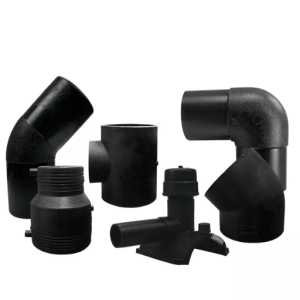
To make the connection safe and leak-free, there are several steps for installing HDPE butt fusion fittings. First of all, collect all necessary instruments, such as the butt fusion machine, cutting tools, and safety equipment. Then, cut HDPE pipes to desired lengths with clean and square ends. After that, pipes in line with fittings are placed into a machine for fusion; heating elements must be applied on both ends until they reach the required temperature, usually about 220°C (428°F). The next step is to remove the heating element quickly after enough heat has been given off, then press them together at controlled pressure for a specific time, depending on the size of the pipe being used. This process is commonly known as “butt” or “fuse.” Once the joint has cooled down naturally without disturbing it too much (usually between 30 minutes and an hour), check if the joint was made evenly strong enough before continuing with installation because joints often fail due to unevenness in thickness or lack of strength at some points along its length. If you follow these steps, your installations will be reliable and efficient.
Required Tools and Equipment
Here are some tools needed to install HDPE butt fusion fittings:
- Butt Fusion Machine: This equipment is used in heating the pipe ends during fusing so that they can have the correct temperatures for proper merging.
- Cutting Tools: When cutting pipes into desired sizes, saws or cutters for pipes should be used. Clean cuts are also necessary.
- Safety Gear: Gloves, goggles, and boots must be put on as personal protective equipment against sharp objects and hot surfaces encountered while doing this work.
- Temperature Measurement Device: It is explicitly designed to measure how much heat has been generated by two joined pipes at their junction after being heated in preparation for joining them together permanently through welding or any other suitable method.
- Clamping Tools: These hold everything together during the alignment process and keep things tight until fusion happens securely.
- Cooling Fixtures: If necessary, use temporary supports that allow a cooling-down period to achieve full firm connection between different parts within the fitting, such as joints between pipes and tees.
Having these tools will make the installation of HDPE butt fusion fittings easy and efficient.
Step-by-Step Installation Guide
- Preparing: Before I start the installation, I should collect all the necessary tools and equipment mentioned above to ensure I have everything with me.
- Cutting the Pipe: I accurately cut HDPE pipes into required lengths using my saws or pipe cutters to get a tight fit. I must do so to ensure the cuts are clean and square.
- Setting Up the Butt Fusion Machine: After that, while setting up this machine, I need to guarantee its cleanliness and good working condition. Furthermore, checking temperature settings & preparing it for heating pipe ends are essential steps I took during this process.
- Heating the Pipe Ends: In addition, what I do next is place the prepared pipe ends into my butt fusion machine, which will heat them until their temperature of fusion specified is attained – thus watching out closely for this procedure with a temperature measuring device of mine.
- Joining the Pipes: When adequately heated at their ends, they should be removed from such machines immediately following my act of aligning them together correctly before pressing clamping tools on each side simultaneously until consistent pressure is applied where needed throughout, always ensuring proper alignment is maintained during the joining process.
- Cooling: The joint must be allowed to cool naturally but supported using cooling fixtures so as not to lose shape or strength as it cools.
- Final Inspection: Lastly, after cooling down completely, a thorough check-up should be done over its quality regarding fusing points, and any visible defects compromising the integrity of the joint should be identified at once.
By following these few simple steps one can have an efficient and reliable HDPE butt fusion fitting installation.
Common Mistakes to Avoid
- Insufficient Readiness: Insufficient preparation of the work area and materials can cause inadequate outcomes. All tools, equipment, and pipes should be clean and well-organized before commencing with fusion.
- Wrong Heating Duration: Each kind of pipe requires specific heating periods. Overheating or underheating a pipe’s ends may weaken it at the joint section. Always follow the producer’s recommendation for heating duration and temperatures.
- Inappropriate Positioning: When joined, Pipes’ misalignment can lead to weak points in between. Use proper clamping tools to maintain steady pressure and correct alignment during fusing.
With these common mistakes being avoided, you will be able to improve on quality and durability for HDPE butt fusion joints hence ensuring successful installation.
What are the Different Types of HDPE Butt Fusion Fittings?
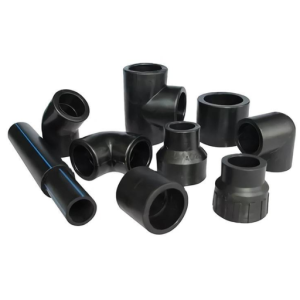
HDPE butt fusion fittings help connect different pipes within a piping system so that there is an uninterrupted flow from one point to another. They come in various forms, including:
- Couplings: These are used when two pieces of a pipe need to be joined together to achieve continuity along the line.
- Elbows: Designed mainly for changing flow direction, usually at 45 or 90 degrees, allowing flow along various orientations.
- Tees: These are T-shaped fittings, which enable branching off from the main pipeline and connecting additional lines of pipework.
- Reducers: They act as connectors between tubes having different diameters where they help regulate fluid velocities as healthy pressures within such systems
- Caps: These are used at ends where no more material should leak out through any opening while transported via conduit systems.
Each type is significant for the effective functioning of HDPE pipe installations since it offers different alternatives depending on particular requirements during setup.
Elbows: 45 Degrees and 90 Degree
In HDPE piping systems, elbows are crucial. They help change the direction of the flow of fluids or gases. The 45-degree elbow provides a gentle turn, which reduces turbulence and pressure loss; hence, it is applied in places where there is a need for slight adjustment in direction without much hindrance to the flow. Conversely, space-saving or quick redirection situations often use 90-degree elbows that produce sharp bends because they take up less space and redirect faster than other types of fittings can do so. Both varieties come in different sizes and configurations suitable for various pipe diameters and specific installation requirements. Therefore, choosing these components ensures efficiency and effectiveness within a pipe system by improving overall performance.
Tees: Equal Tee and Reducing Tee
Based on my work with high-density polyethylene (HDPE) pipes, tees are essential when branching out pipelines. Equality tee connects three equal-sized pipes, allowing for even distribution of flow among all branches, thus making it more applicable in systems where liquids or gases have to be evenly diverted elsewhere in a system, but reducing tee should be used instead if one wants to connect larger diameter pipe with a smaller size because this will help manage transition levels between different diameters better since knowing that every branch needs to operate effectively based on its design intention.
End Caps, Reducers, and Couplers
In HDPE piping systems, reducers, end caps, and couplers are essential as they make it possible to adapt and terminate pipelines. In most cases, the work of an end cap is to seal off one end of a pipe so that there can be no leakage or damage to the whole system. They come in different sizes and can withstand high internal pressure. On the contrary, reducers are used when connecting two pipes with varying diameters, which helps to smoothen the transition, thereby ensuring smooth flow without turbulence. Couplers provide a convenient means when joining pieces of the tube or extending lines through them since it’s not complicated. The proper selection and fitting of these accessories is vital for the efficient functioning of HDPE systems while still considering their long-term performance.
What are the Advantages of Using HDPE Butt Fusion Fittings?
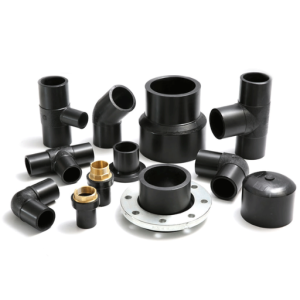
Butt fusion fittings have several benefits for use in piping systems made from high-density polyethylene (HDPE). To begin with, they create seamless connections that do not allow any leakage by melting together two ends of pipes, thus making them stronger, too. This also gives more freedom during design since butt fusion fittings can be arranged differently without using additional jointing components. Moreover, the absence of mechanical joints reduces the chances of failure caused by external forces acting on joints or movements within such parts themselves; this can lead to early breakage if not appropriately checked over time, especially where flexibility is required along pipeline routes. Additionally, HDPE materials resist corrosion incredibly even when exposed directly to harsh chemicals, thereby giving longer life span for such systems. Last but not least, these types of connections improve overall reliability besides reducing maintenance costs associated with failures in service delivery due to poor jointing methods adopted during the installation process, among others.
Durability and Longevity
HDPE butt fusion fittings are famous for their strength and long lifespan, which makes them perfect for use in different pipe applications. Industry insiders say such fittings can remain functional for years, even more than 50 if used commonly. The material does not lose its properties when exposed to drastic temperatures, UV rays, or even chemical substances; thus, it remains intact throughout all these years. Additionally, fused joints remove the need to worry about leaks or joint failure, thereby increasing the overall life of a piping system. Regular maintenance coupled with the proper installation methods also plays a significant role in ensuring that HDPE butt fusion fitting last longer by performing better under harsh industrial conditions as well as residential setups.
Leak-Free and Strong as the Pipe
From my understanding, HDPE butt fusion fittings not only prevent leakage but also have equal strength to the pipe itself. This is because when you fuse two pipes, it becomes one solid piece, unlike mechanical joints where there might be some weak points along them. So what happens is that after connecting them, there will be no space left between those joined areas, hence creating a powerful bond that can withstand high pressures plus other environmental factors. What I found out through my research is that if a butt fusion joint is done correctly, then nothing should happen to its integrity even if subjected to repetitive cycles of pressure from within and without besides other external forces like vibrations, therefore making it suitable for both water and gas systems where reliability matters most based on my experience with this type of fitting over time. In general terms, these connectors are dependable due to their durability against any breakage.
Resistance to Chemicals and Corrosion
HDPE joint fusion fittings are highly resistant to chemicals and corrosive materials of different kinds, hence making them suitable for many industrial uses. Several industry sources have observed that this thermoplastic material has a natural resistance to acids, bases, and most solvents, which ensures it remains unharmed even in aggressive surroundings. Furthermore, unlike metallic joints, these don’t rust or corrode due to contact with water or any other liquid chemical; thus, they can stay long before replacement is needed. This ability to withstand substance degradation is essential in industries dealing with dangerous goods because it enables them to work safely without interruptions caused by leakages from rusting through pipes.
Reference sources
- Butt Fusion: Ultimate Guide to HDPE Pipe Joining
- HDPE Fusion Manual
- Butt Fusion Joining Procedure and Qualification Guide
Related Articles:Technical Specifications of HDPE Butt Fusion Fittings



